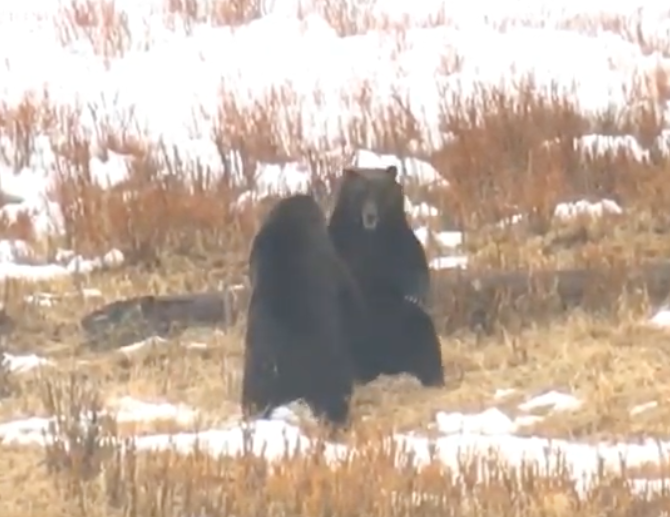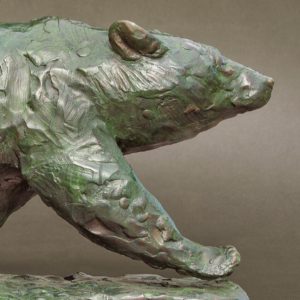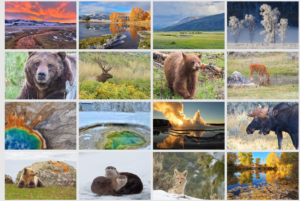Spring is a pretty darned exciting time in the park, when it seems like anything is possible. And of course one of the things we get the most excited about are….grizzly bears! Even when spring weather is crummy (like it has been lately), we head out early most mornings to try and get a glimpse of these impressive bruins wandering the landscape and taking advantage of winter-killed animals.
My first glimpse of a grizzly this year was quite memorable! Two grizzly bears were fighting over a bison carcass in the Slough Creek area, one of which later chased a wolf off the bounty. The grizzly bear and wolf interaction really stuck with me, so I raced home to the studio to try to capture the moment in clay.
See the bear and wolf footage, and a time-lapse of the encounter coming to life in sculpture:
A big part of why I feel it’s important to share these stories is that the nuances in behavior you see between animals reveals their characters as individuals. They are both as unique and as similar as each of us. They resolve conflicts between each other much as we do—both peacefully and violently—through subtle looks and gestures that let you know unequivocally where the score actually lies. Like a mother giving her child “the look” to keep them in line, the language between a grizzly bear asserting dominance over a carcass is equally subtle yet powerful. Nothing needs to be said, but everything is communicated. This is the kind of interaction I’m trying to relay through sculpture.
It’s all lies! Stretching the facts to better tell the truth about the grizzly bear and wolf interaction…
After the initial attempt at putting this encounter in sculpture, I realized I had to make a few changes, including hacking apart the original bear to replace it with a new one. In this second video, I talk more about the animals’ behavior, and why I need to “lie” in order to get at the real meat of the interaction.
We look forward to watching many more bears over the coming weeks. Male grizzly bears are the first to emerge from their dens (some as early as February), followed by females with cubs in late April and early May. When they emerge from the den, winter killed animals like deer, elk, and bison are an important source of food. Carcasses like this bison are quite a bounty for a variety of species, including bears, wolves, coyotes, foxes, ravens, magpies, eagles, and a whole host of invertebrates.
Coming out of a winter like this one with lingering deep snows, there’s a high probablility of running into a carcass while out watching or hiking. Needless to say, it’s a time to be extra vigilant! We carry bear spray, hike in groups, make noise, and watch for activity (like collections of ravens and magpies) that might clue us in to the presence of a carcass so we can be sure to keep our distance. The photo above and the video footage were taken through a spotting scope from at least 1/2 mile away. If you’re thinking of venturing into grizzly bear territory, read more about how to stay safe.
If you love bears as much as we do, check out: Stumbling Upon a Grizzly Bear Banquet, First Grizzly Bear: An Annual Treat, Scarface: Beloved Yellowstone Grizzly Bear, and Bear-ly Aware: Deciphering Grizzly Bear Sign.
[et_bloom_inline optin_id=”optin_4″]
Film © Jenny Golding/A Yellowstone Life



